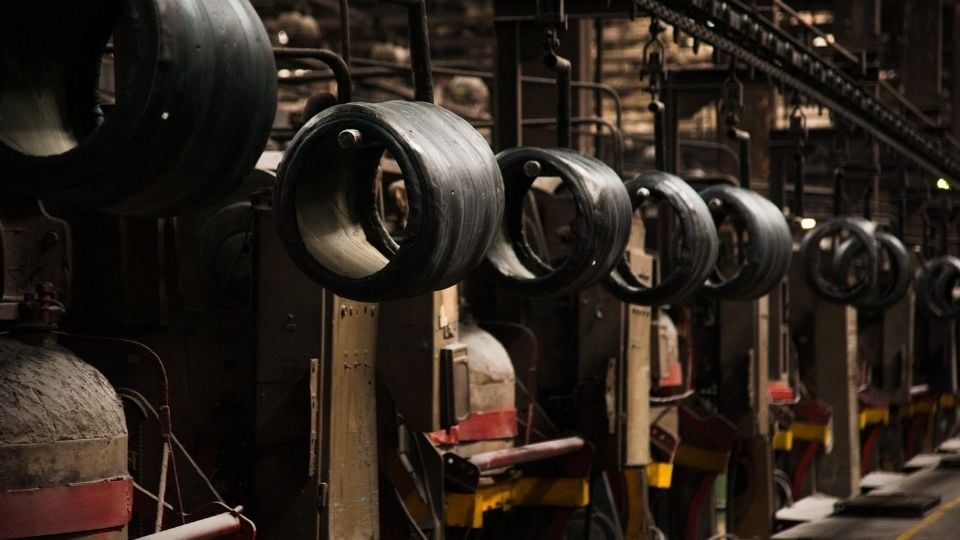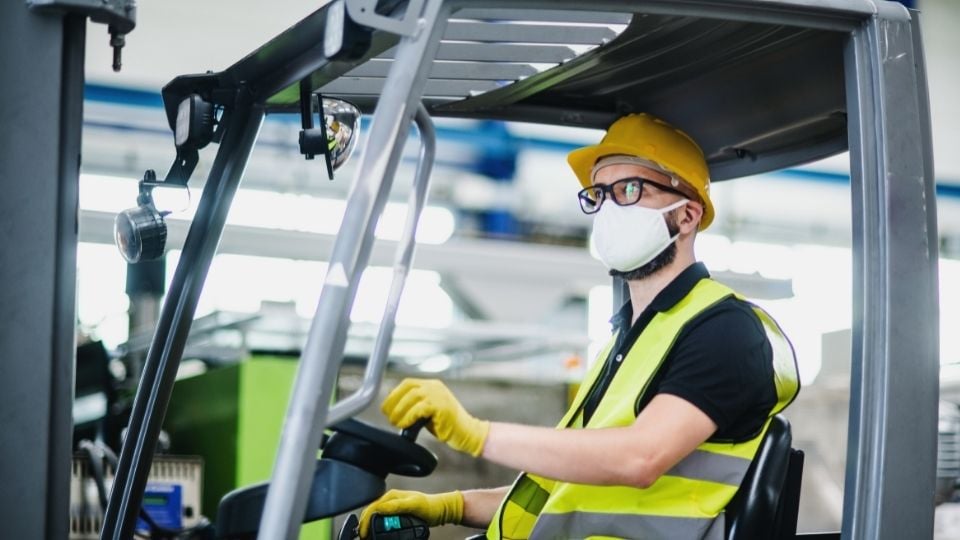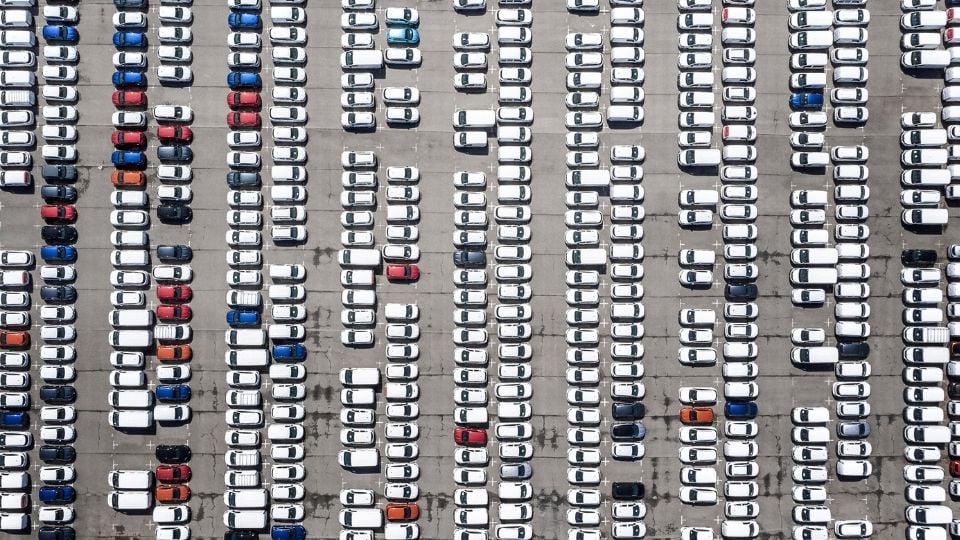Who is using RTLS in brownfield operations?
| Written by Mark Buzinkay

No video selected
Select a video type in the sidebar.
Table of contents:
- Brownfield factories
- How do you optimise brownfields?
- What is RTLS?
- Where to apply RTLS
- Takeaway
- Glossary
Brownfield factories
A brownfield is an investment in the financial business world when a company or government entity purchases or leases existing production facilities to launch a new production activity. This investment is one strategy used in foreign direct investment.
The alternative to this is a greenfield investment, in which a new plant is constructed. The clear advantage of a brownfield investment strategy is that the buildings are already built. Therefore, you can reduce the costs and time of starting up considerably.
In the case of industrial production, brownfield refers to the state of connectivity in existing machines. Traditionally, machines are stand-alone, and parts are moved either manually or with the help of a conveyor belt. The status of the producing goods is not collected and used for production control. In the digital era, machines interact with a central unit and other devices through the Industrial Internet of Things (IIoT). The switch from traditional to digital production in brownfield factories is called brownfield transformation, which is used to distinguish between projects improving existing machines and infrastructure and projects planned as new factories (greenfield). In this usage, brownfield transformation optimises current operations and capacities. The term brownfield can also be used for a factory with mostly analogue machines. Brownfield transformation is, therefore, a process to add significant digital infrastructure. In both meanings, it increases connectivity in existing machines.
How do you optimise brownfields?
Across the globe, the vast majority of factories are brownfield facilities. The average age of industrial assets in the Western world is around 25 years, and most of the equipment dates back to before the digital revolution. In other words, typically, brownfield operations remain analogue brownfield operations. Interestingly, the older the plant, the less likely ownership will invest in new machinery. As the costs for digital solutions have been very high, most manufacturers opted for the greenfield approach to set up an entirely new factory instead of investing in ageing facilities, contributing to the digital disparity between analogue brownfield operations and digital greenfield processes.
Since 2015, the digital parameters have changed dramatically as cloud and edge infrastructure evolved, and advanced sensors and mature IIoT solutions surfaced. As a result, manufacturers began to pursue brownfield digitisation without significant investments in machines and harvested digitisation's value. The most successful projects use specific technologies to achieve specific business goals. For brownfield facilities, there are many opportunities to be achieved easier when assets are connected.
Let's explain this quickly using an example: simple sensors measure asset performance (e.g. the current temperature of a refrigerated container) and transmit the data to the central system. Understanding how your refrigerated containers consume energy and isolate temperature can tap into a source of cost savings. In addition, you will be able to adapt your (monitoring) process to save time and mitigate human errors. You can reduce downtime and optimise maintenance in a factory because you understand how your production influences a machine's lifecycle. Sensors, readers and gateways create a digitalised version of your analogue production process without the extensive and expensive (new) infrastructure to enjoy the benefits of digital manufacturing in exiting brownfield operations.
Further reading: RTLS Tags - Utilizing RTLS to improve your plant efficiency.
What is RTLS?
According to the ISO/IEC 24730-1:2014 standard, the real-time locating system (RTLS) is a wireless system used to locate the position of an item anywhere in a defined space at a point in time that is or is close to real-time. Indoor positioning systems (IPS) locate objects in closed structures, such as office buildings, hospitals, stores, factories, and warehouses, where the GPS proves to be inaccurate.
Do you want to understand RTLS technology? Download our RTLS eBook, no registration needed!

Where to apply RTLS
Different application possibilities exist in manufacturing departments with RTLS. The possible benefits define how to validate the efficiency of an RTLS project. The applied positioning system provides real-time information about where equipment, semi-finished or finished products and specified logistic vehicles or workers are located in the manufacturing area.
Production control with RTLS
Production control is one central area where RTLS may be applied in brownfield operations. Cycle time optimisation is a critical task, primarily when you produce just-in-time (JIT). A survey indicated that 59% of U.S. companies produce with minimal inventory levels. (2) Tracking of mobile assets, materials, key components, pallets and even workers bear the potential of RTLS in just-in-time manufacturing: first, it will reveal the bottlenecks of your processes; second, it will add additional data to improve your performance: the real-time position of products and assets.
Pairing a semi-finished product with a transponder or tag makes inter-manufacturing tracking possible and supplies the manufacturing operating software with data like
- Time spent on the workstation for a given product
- The production sequence
- Which products are/have been on rework
- Which products are/were in quality assurance
- Average lead time for a particular product type (tact time)
- The goods in production are available with a continuous, real-time production status that supports production programming and shift design
RFID-based intelligent decision support system architecture also does production monitoring and scheduling in a distributed manufacturing environment. Furthermore, RTLS technology can even be an element of reconfigurable facility layout planning. With its help, the processing steps and their relationships can be easily mapped and recorded in a database.
RTLS in (intra-facility) logistics
Logistics efficiency depends on the movement of vehicles like forklifts and pallet trucks and moveable assets like bobbins or even finished products (e.g. cars). To improve logistics efficiency, we must thoroughly understand our current processes to discover the points where lead time reductions can be achieved. A properly selected RTLS technology can be a tool for exploring logistics processes and delivering the following information:
- Routes and time spent in specific areas
- Current location (storage, parking)
- Data for predictive maintenance
- Overall equipment effectiveness
A forklift is an example of how RTLS changes logistics and manages various assets within shop floors. The RTLS determines movements associated with assets that it picks up or puts down. RFID-enabled positioning systems locate the vehicle, and UHR-RFID reading tags register to attach and to detach activities. So tracking of transportation devices is mandatory to obtain an accurate picture of intralogistics processes but also the current position of an asset.
Applications in Quality Management
In Quality Management, consistent quality is the goal. Missing this goal has a cause, and to identify this root cause, we need visibility of the process that generates the product. With a real-time tracking system, we can monitor the material flow and detect problematic weak spots in the production process. Root cause analysis is an essential component of quality assurance for the manufacturing company's customers. Once the root cause is investigated, action plans can be implemented, such as a review of the workflow, redesign of the workspace, education of workers and modification of work instructions.
Another possible advantage is RTLS-based dynamic work instruction. A crucial point in non-automated and human resource-required production processes is ensuring the operators' well-supported work. One possible solution is to show just the information required to process the actual workpiece and no more. One use case could be feeding materials in a machine: A light indicates which bobbin-carrying rubber is next to feed a tire-producing machine. The goal is to reduce waste (rubber has a shelf-life) and to document which tires have been made from which batch. (Read more about automatic quality documentation).
RTLS for Safety
Collision avoidance is another aspect of RTLS that is beneficial in brownfield operations. Real-time alerts and even a machine full-stop can be implemented to prevent accidents based on the movement of vehicles and workers (LINK Borema). Many workplace accidents are based on missing protective equipment or not following safety regulations. For example, a forklift won't start if the driver is not authorised to conduct this vehicle. RTLS technology can control employees' access to restricted areas by sending automatic alerts whenever someone enters an unauthorised area (e.g., the LINK zone concept in a mine). Moreover, in an emergency, such technology can be used to determine if everyone has already left the area or whether every worker used the designated route to leave the building. In addition, systems like e-Mustering for an offshore workplace are in place (LINK) to ensure that the regulations of EHS (Environment, Health and Safety) are met.

Takeaway
Brownfield manufacturing is widespread but technically spoken, not state of the art. Brownfield operations can be upgraded to a relatively fast digital standard without substantial investments. RTLS is the key here. Real-time monitoring and optimisation of production and logistics process significantly improve production systems' efficiency. Advanced production management solutions require real-time information about the status of products, production, and resources. As real-time locating systems enrich the available information, these systems are the way to improve brownfield operations substantially.
Read more about car logistics, customer experience (CX) at VW and how Volkswagen uses RTLS to excel.
Continue reading the complete overview: Real time location systems in manufacturing and indoor logistics
Glossary
Beacon refers to a signaling device that emits light, sound, or radio waves to guide, warn, or transmit information. Traditionally, beacons were used in lighthouses and fire signals. Modern beacons include Bluetooth Low Energy (BLE) devices used for proximity marketing, navigation, and asset tracking. They enhance location-based services in industries like retail, transportation, and emergency response by enabling real-time communication with nearby devices. (3)
References:
(1) Maciej Mikoda, Krzysztof Kalinowski, Grzegorz Ćwikła, Cezary Grabowik,
Krzysztof Foit: Accuracy of Real-Time Location System (RTLS) For Manufacturing Systems. In: International Journal of Modern Manufacturing Technologies; ISSN 2067–3604, Vol. XII, No. 1 / 2020
(3) Hargrave, J. (2018). Beacon Technologies: The Hitchhiker’s Guide to the Beacosystem. Apress.
Note: This article was updated on the 11th of August 2025.

Author
Mark Buzinkay, Head of Marketing
Mark Buzinkay holds a PhD in Virtual Anthropology, a Master in Business Administration (Telecommunications Mgmt), a Master of Science in Information Management and a Master of Arts in History, Sociology and Philosophy. Mark spent most of his professional career developing and creating business ideas - from a marketing, organisational and process point of view. He is fascinated by the digital transformation of industries, especially manufacturing and logistics. Mark writes mainly about Industry 4.0, maritime logistics, process and change management, innovations onshore and offshore, and the digital transformation in general.





